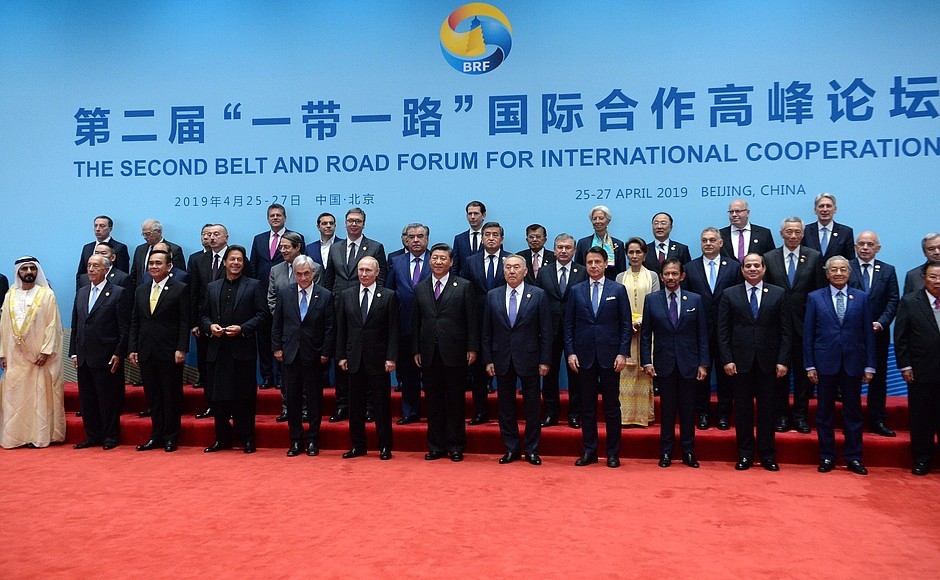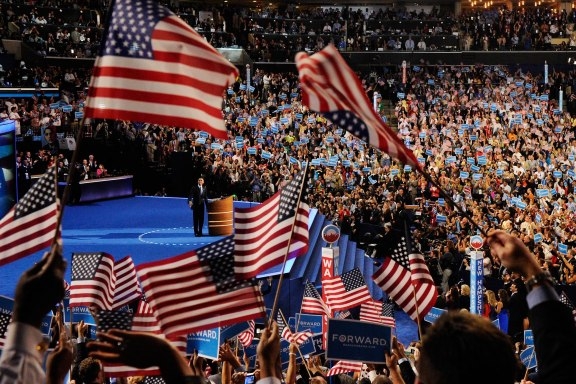
The Big Takeaways From the Second Belt and Road Initiative Forum
Photo credit: RIA Novosti
 China's Belt and Road Initiative (BRI) is Chinese President Xi’s signature
China's Belt and Road Initiative (BRI) is Chinese President Xi’s signature
foreign policy plan and is one of the most ambitious infrastructure and investment
efforts in history. The BRI began in 2013 to boost trade through investment in
ports, power plants and other infrastructure in more than 140 countries from Asia
to Europe and Africa.
Chinese President Xi Jinping hosted over 5,000 delegates from around the world from April 25 to 27 in Beijing to discuss his signature infrastructure project. This Second Belt and Road forum ran under the theme "Belt and Road Cooperation, Shaping a Brighter Shared Future". The focus of this forum is on practical cooperation.
Here are a few takeaways from the forum and from President Xi’s keynote speech.
Who has and who has not attended
The final total of attendees was more than 5,000 participants from more than 150 countries including 37 heads of state and government.
The BRI is definitely booming in China’s core regions. Out of the 10 ASEAN (Association of Southeast Asian Nations) members, nine leaders attended with Indonesia being the one exception.
Another great attendance success is from Central Asia with four out of five top leaders while the lone exception is Turkmenistan.
European countries counted for a third of the attendance with 12 out of the 36 heads of state and governments which includes countries like Russia, Azerbaijan, Austria, Cyprus, Portugal and Italy which is the first nation from the Group of Seven (G7). Germany, France and the United Kingdom didn’t send any representative, however the BRI is without a doubt going through a growing interest from Europe.
Similar growth can be observed in Africa. While only two heads of state attended the first forum in 2017, this year the number jumped to five with leaders from Djibouti, Egypt, Ethiopia, Kenya and Mozambique.
There is still a number of noticeable absent countries from South and East Asia, the Middle East, Latin America and of course the leaders of the United States, Australia, New Zealand and Canada. Even so, in his address to the forum President Xi told attendees that, “The Belt and Road Initiative is not only for China,” and reaffirmed that the belt and road plan would benefit, “all of its participants,” and not only China.
“The belt and road is not an exclusive club and the project does not only serve the interests of China but also benefits multilateralism which delivers, “a win-win outcome and common development”, said Xi.
More support and US$64 billion in new deals
During the first BRI forum in 2017, just 29 countries had pledged to support this initiative. This time, 37 nations including Austria, Portugal, Singapore, Thailand and the United Arab Emirates among the new signatories, joined President Xi in signing a communique which outlines their joint effort to begin the next phase of the project. Aside from the new support gained, President Xi also announced at a press conference that more than US$64 billion worth of deals were signed during the three days.
China will not devalue the yuan
Contrary to the U.S. criticisms, President Xi reassured BRI participants that China would not engage in any “beggar-thy-neighbour” currency devaluation, but instead the Chinese currency will be kept stable within a reasonable range.
“China will continuously improve the yuan exchange rate formation mechanism,” and “keep the yuan exchange rate basically stable at a reasonable and balanced level,” Xi said. He also announced that in this effort China will strengthen macroeconomic policy coordination with other major economies.
Going green
Although the U.S. federal government has been skeptical towards this event, various American representatives from some of the largest states are attending the conference to show support for international efforts to fight against climate change. Among them, California’s Lieutenant Governor Eleni Kounalakis attended the event primarily to, “talk about climate change and urge participants to prioritize the issue, and consider how the ‘Belt and Road Initiative’ can drive positive action for this global threat."
“What China has attempted to do is no small feat. When fully operational, China will have the largest emission trading market in the world,” Kounalakis said. “The Belt and Road Initiative presents perhaps the greatest opportunity today for China to confirm its commitment to combating climate change.”
President Xi stressed that “a data platform on green growth will be launched,” as he unveiled various cooperation mechanisms and projects on financing, technology transfer, poverty reduction, green growth and other areas.
In 2013, China set to implement carbon trading platforms in seven areas and in 2017 they announced their plans to commence a nationwide scheme.
Last month a senior climate official advised that the scheme was anticipated to start operating sometime next year.
In his closing speech, Xi announced that a consensus was reached on promoting "high-quality cooperation" under the BRI to make this plan more diversified and financially responsible.








